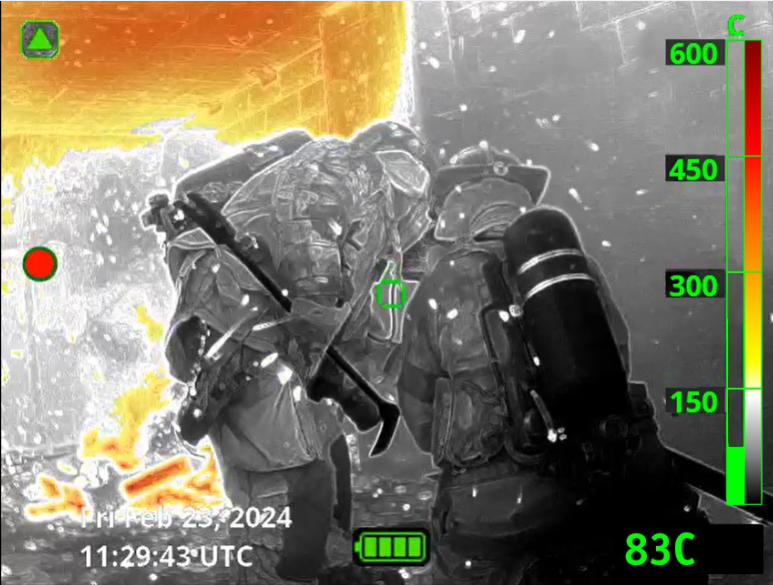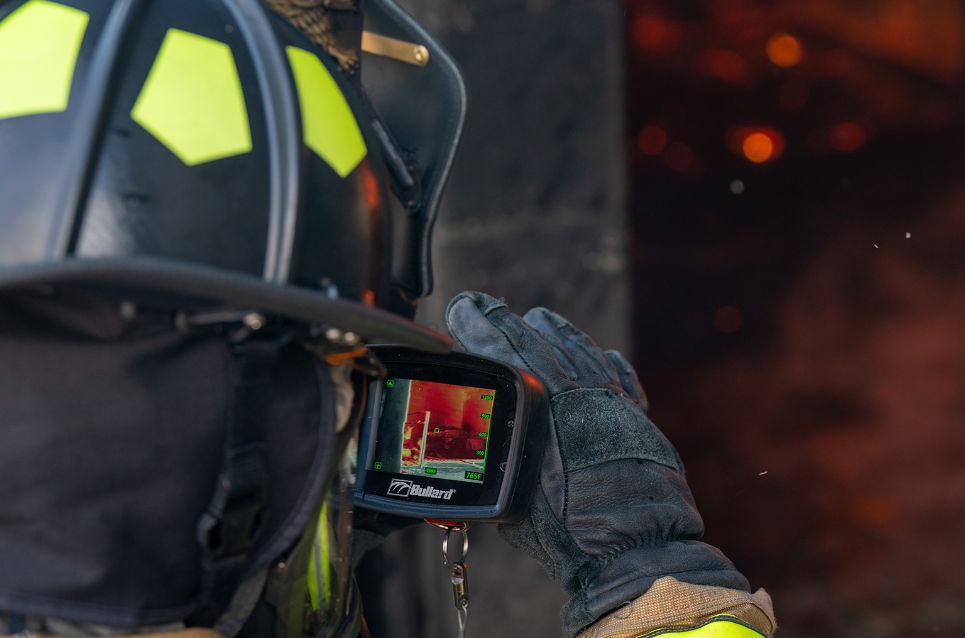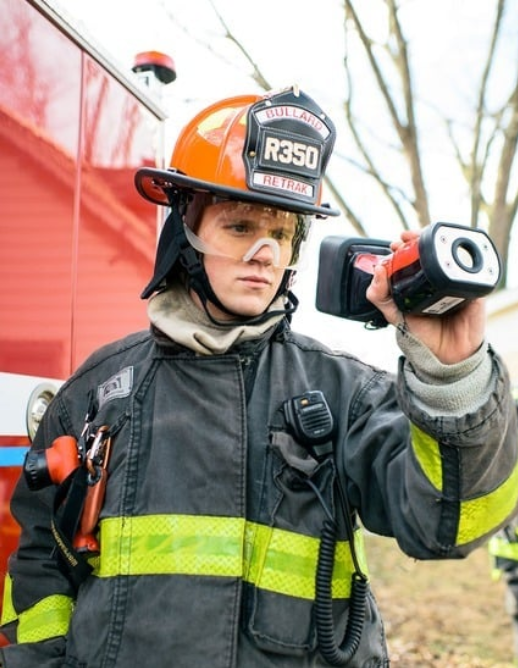Thermal imagers are fundamental tools in firefighting, and their effectiveness often depends on the quality of the images they produce. When evaluating different brands, it’s essential to understand how image quality metrics like resolution, image enhancement, display features, and sensitivity affect performance. This guide highlights the key factors to consider, helping your department choose a thermal imager capable of meeting the demands of the job.
1. Resolution: Clarity in the Field
Resolution is a critical determinant of image quality. It refers to the number of pixels in the thermal sensor, which directly affects the clarity and detail of the images.
- Key Metrics:
- Common resolutions include 160 x 120, 320 x 240, and 640 x 480 pixels. Higher resolutions provide sharper, more detailed images, particularly useful for identifying victims, heat sources, and structural features. Check out one of the highest resolution imagers on the fire market here.
- What to Look For:
- Compare the resolution across models to determine which provides the clearest image for your department’s needs. Higher resolutions are particularly valuable for decision-making scenarios and structural assessments.

2. Image Enhancement: Beyond Raw Data
Image enhancement technologies refine the raw thermal data captured by the sensor, improving visibility and usability.
- Key Features to Evaluate:
- Dynamic Range Optimization: Helps ensure accurate imaging in high-temperature environments by balancing extreme contrasts.
- Color Palettes: Enhanced color overlays highlight critical thermal details like hotspots or flow paths. Look for a variety of color modes that suit diverse operational needs.
- Edge Detection: Adds sharpness to objects, improving visibility of outlines in complex environments. Check out this video on white edge enhancement here.
- What to Ask: Does the imager include proprietary image enhancement features to improve clarity in high-contrast or smoky conditions?

3. Display Quality: Viewing Matters
The display is how firefighters interact with the thermal imager, making its quality crucial for effective use.
- Brightness and Contrast:
- Displays must offer sufficient brightness and contrast for visibility in daylight or low-light conditions.
- Viewing Angles:
- A wide viewing angle helps ensure that the display remains clear, even when viewed from the side or during rapid movements.
- Size and Resolution:
- Larger, higher-resolution screens provide more detail and make it easier to share thermal data with a team.
- What to Test:
- Check for glare resistance and how the display performs in challenging environments, such as under smoke or bright lights.

4. Thermal Sensitivity: Detecting Subtle Differences
Thermal sensitivity refers to the imager’s ability to detect small temperature differences. This is crucial for identifying subtle heat patterns that might otherwise go unnoticed.
- Measured in mK (millikelvins): Lower numbers indicate higher sensitivity. For example, an imager with a sensitivity of <50 mK will provide more detailed thermal gradients than one with <100 mK.
- Application Examples:
- Detecting early-stage fires, identifying victims, or locating hotspots in overhaul.

5. Field Usability: Designed for Firefighters
A high-quality image is only useful if the imager is easy to operate in real-world conditions.
- Glove-Friendly Controls: Verify buttons and settings can be adjusted while wearing gloves.
- Durability: Check for water resistance, drop testing, and how well the imager performs in extreme temperatures.
- Refresh Rate: A higher refresh rate (e.g., 30 Hz or more) provides smoother images, reducing lag during dynamic operations.

6. Practical Testing: Real-World Performance
Comparing specifications is essential, but nothing beats hands-on testing:
- Smoke Room Simulations or Live Fire Situations: Evaluate how well the imager performs in smoke-filled environments with low visibility.
- Lighting Conditions: Test in both bright daylight and low-light scenarios.
- Temperature Extremes: Assess how the imager handles high-temperature contrasts without losing detail.

Conclusion: Making the Right Choice
Comparing image quality across thermal imagers requires careful consideration of resolution, image enhancement, display features, sensitivity, and field usability. By understanding how these factors impact performance, your department can select a device that delivers reliable, clear thermal images when it matters most.
For thermal imagers designed with firefighters in mind, explore options that prioritize ergonomic design, advanced image enhancement, and displays tailored for field use by visiting www.Bullard.com.



